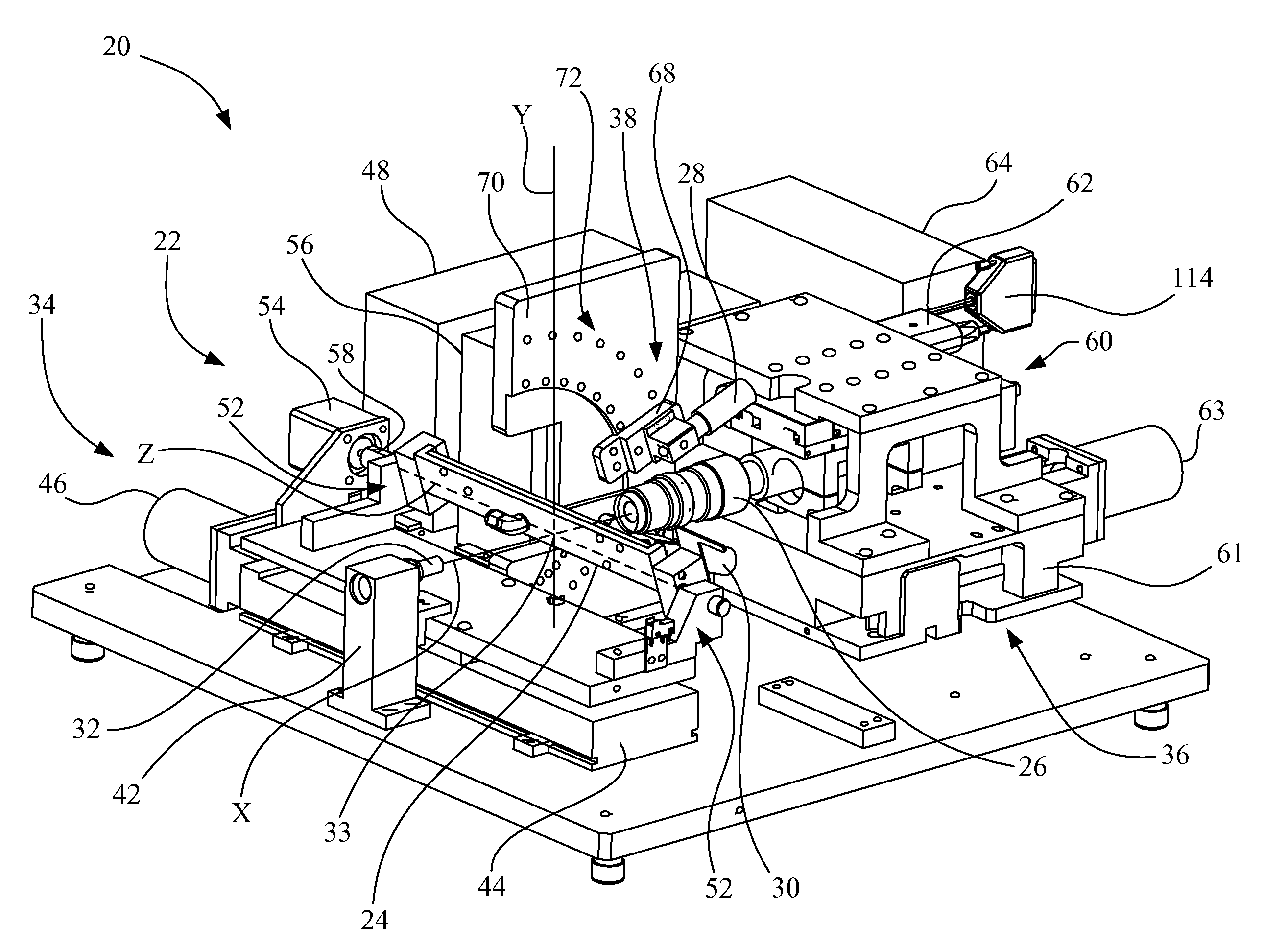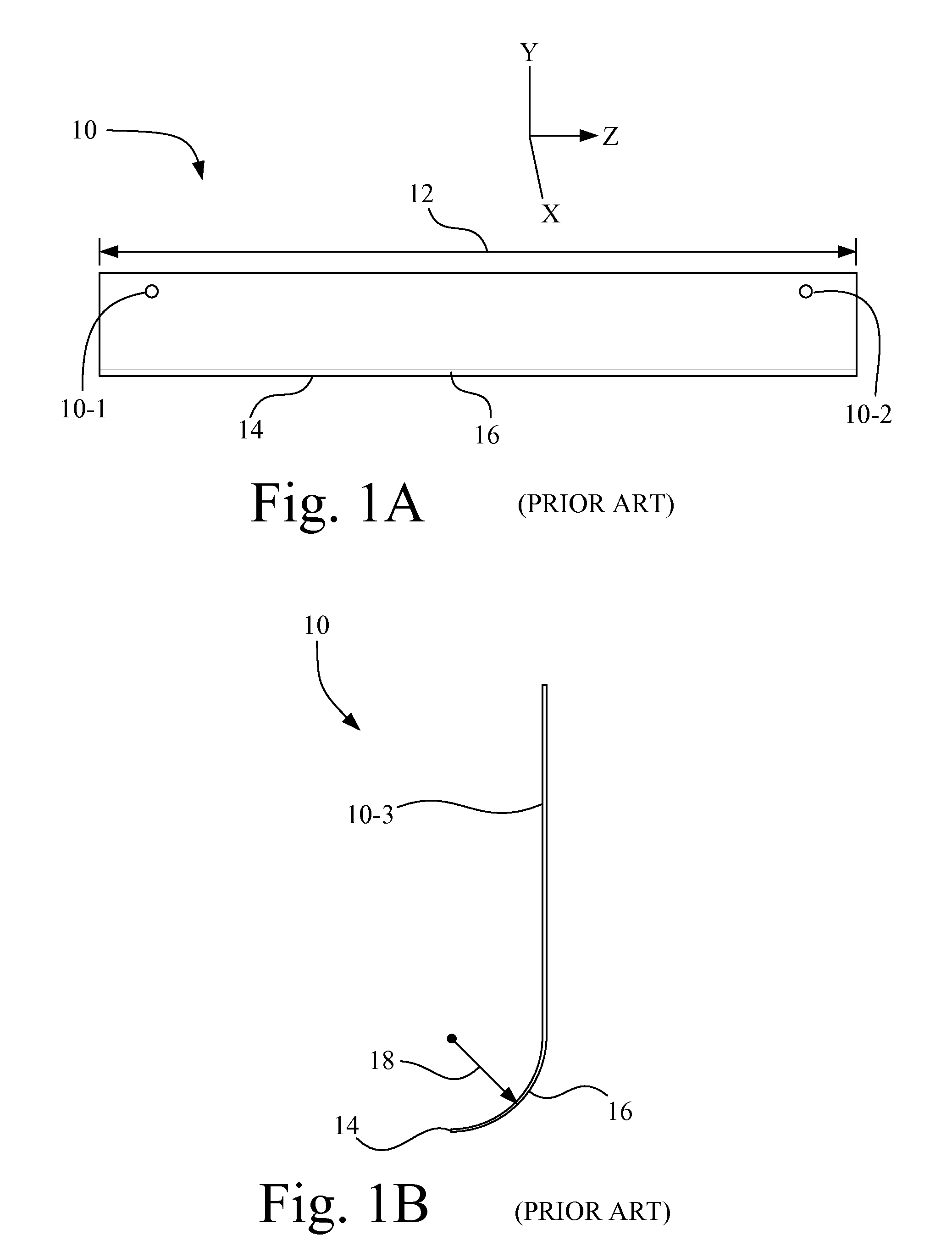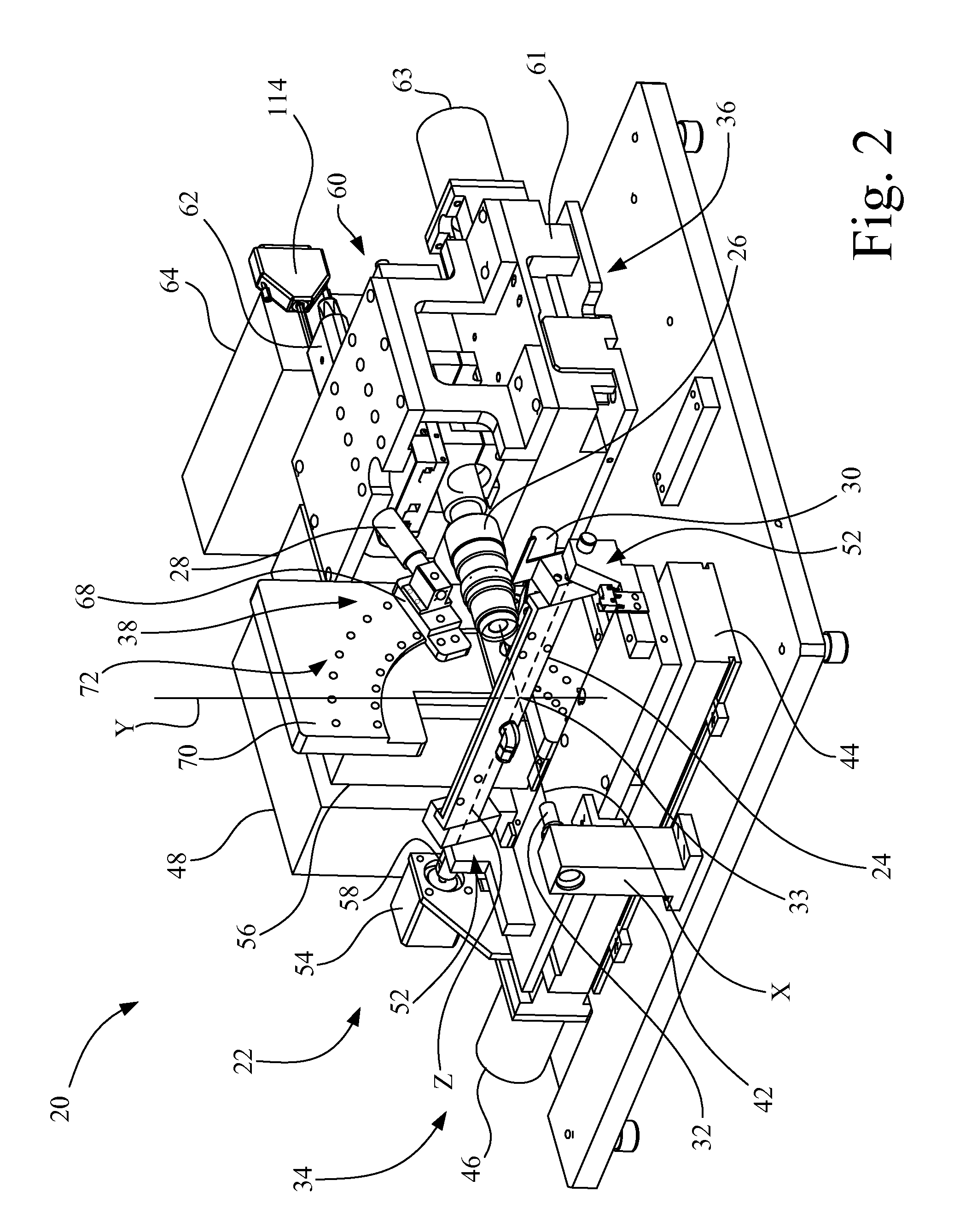Method For Measuring Doctor Blade Geometric Deviations
a geometric deviation and doctor blade technology, applied in the field of doctor blades, can solve problems such as inconsistent and unacceptable print quality
- Summary
- Abstract
- Description
- Claims
- Application Information
AI Technical Summary
Problems solved by technology
Method used
Image
Examples
Embodiment Construction
[0038]Referring now to the drawings and particularly to FIGS. 2-5, there is shown an apparatus 20 for measuring geometric deviations in a doctor blade, such as doctor blade 10 shown in FIGS. 1A and 1B. Apparatus 20 includes a mounting fixture 22, a doctor blade holding device 24, a camera 26, a first light source 28, a second light source 30, and a third light source 32.
[0039]Camera 26 may be, for example, a charge-coupled device (CCD) having a field of view of approximately one millimeter. Camera 26 defines an optical axis, which in turn defines an X-axis in a Cartesian coordinate system that will be used in describing the orientation of components of apparatus 20. A Y-axis is oriented vertically orthogonal to the X-axis. A Z-axis is oriented orthogonal to both the X-axis and the Y-axis. An origin 33 of the Cartesian coordinate system defines an intersection point, which may also be referenced by element number 33.
[0040]Mounting fixture 22 includes a mount 34 for mounting doctor bl...
PUM
 Login to View More
Login to View More Abstract
Description
Claims
Application Information
 Login to View More
Login to View More - R&D
- Intellectual Property
- Life Sciences
- Materials
- Tech Scout
- Unparalleled Data Quality
- Higher Quality Content
- 60% Fewer Hallucinations
Browse by: Latest US Patents, China's latest patents, Technical Efficacy Thesaurus, Application Domain, Technology Topic, Popular Technical Reports.
© 2025 PatSnap. All rights reserved.Legal|Privacy policy|Modern Slavery Act Transparency Statement|Sitemap|About US| Contact US: help@patsnap.com



